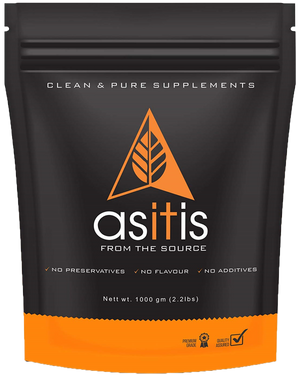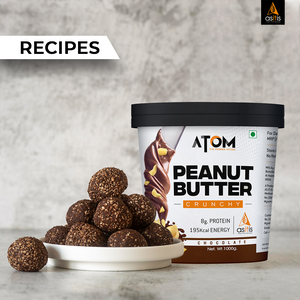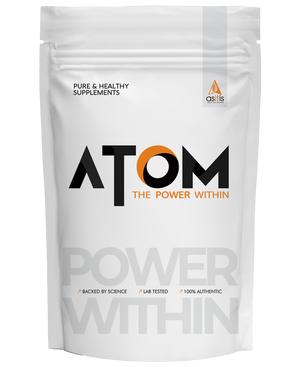
What Is Carb Loading? Is It Useful & How?

W
hen it comes to sports and fitness, protein always steals the show and is the celebrated nutrient for its muscle-building properties. The spotlight needs to be shed on another nutrient too: carbohydrates. If you haven’t heard of carb-loading, this blog will help you understand the science behind carb-loading and why it is used by some athletes as a strategy to maximize their athletic potential.
If you have ever come across some athletes chowing down on a big plate of pasta before a race or intense workout and wondered why they do that, that’s because of the role carb plays and it's called carb loading.
The importance of nutrition for sports performance has been highlighted by studies and when it comes to energy management of endurance athletes, the role of carbs is of special interest.
Also Read: Low Carb Vs Low Fat – Which Is Better For Weight Loss?
UNDERSTANDING WHAT IS CARB LOADING

Before we understand, what is, carb loading we must first understand the role of carbohydrates and glycogen in the body.
Carbohydrates are the primary energy source for the body. When you consume carbohydrates, your body breaks them down into simple units called glucose. The glucose is used up for energy immediately and if there is more glucose which the body may not immediately need, it gets converted into glycogen and stored in the liver and muscles for later use. So, glycogen is the stored form of glucose molecules bonded together that your body taps into at times of requirement.
Now we’ll tell you what carb loading means…
The role of carbohydrate intake in boosting endurance performance is well-established. Carb loading is a nutritional strategy followed by athletes to maximize the stored carbs (glycogen) in the muscles. Carb loading is a technique of consuming high carbs in the days leading up to an event combined with reduced physical activity to maximize the glycogen stores for the event.
Carb loading is done by a particular method, it involves a period of reduced carb intake (where you’ll consume less than 2g/Kg/day) followed by a high-carb intake (typically 2-3 days before an event) when you’ll increase the carb intake to 8-12g/Kg/day. A period of depletion is followed by a period of super-compensation.
Doing this will dramatically increase your carb intake (to about 70-80% of your total calories) and will lead to a 90% increase in glycogen storage when compared to before the carb load. Carb loading helps to increase the muscle glycogen stores far beyond the resting levels. This will allow your muscles to become more efficient at storing glycogen than they normally would.
Also Read: Top 10 Bodybuilding Tips For Hardgainers
BENEFITS OF CARB LOADING
By now you know that glycogen storage is not just an energy substrate but a regulator of exercise-induced adaptations.
During high-intensity exercise, your body breaks down glycogen to provide energy. More glycogen stores mean you have more energy to push yourself further and sustain your efforts longer.
Low glycogen stores will cause fatigue to set in. Carb loading will help to prevent this by ensuring your muscles are fully stocked with glycogen, allowing you to go longer before experiencing fatigue.
Carb loading can lead to an increase in performance by 2-3% during endurance activities that last more than 60 minutes. This is pretty significant.
While the primary goal is to enhance performance during an event, carb loading can also support quicker recovery by ensuring your muscles have the fuel they need to bounce back.
Also Read: Effective Strategies To Improve Digestion Naturally
WHEN TO DO CARB LOADING?
If you are engaging in endurance events lasting longer than 30 to 60 minutes, then Carb loading is suitable. For example, if you’re participating in a marathon on Sunday, then you should begin Carb loading on Friday and continue through Saturday to ensure glycogen super-compensation.
WHAT KIND OF CARBS ARE YOU SUPPOSED TO EAT WHILE CARB-LOADING?
-
High-quality, nutrient-dense carbohydrates that have low glycemic index are generally preferred for Carb loading.
-
Dietary carbs like simple glucose and fructose get metabolized into liver glycogen and are ineffective in raising muscle glycogen storage.
-
Complex carbs have minimal effect on blood sugar levels and provide a sustained release of energy.
-
Brown rice, oatmeal, whole-wheat pasta, quinoa, sweet potatoes, vegetables, whole-grain bread, low-fiber cereals, white rice, white pasta, rice cakes, maltodextrin, banana, orange juice, skimmed milk, granola bars are some of the high-quality carbs that offer a steady release of energy and have minimal effect on blood glucose levels.
Also Read: Good Carbs Vs Bad Carbs – What’s The Difference?
WHO CAN USE CARB LOADING?
Carb loading is particularly beneficial for endurance athletes who engage in prolonged, intense workouts lasting more than 60 minutes (in whom glycogen depletion is a concern). Marathon runners, long-distance cyclists, triathletes, long-distance swimmers, basketball players, rowers, and field hockey players can consider using the Carb loading technique. Maximizing the glycogen stores can help them to perform with high intensity for prolonged periods.
Also Read: Few Don’ts Every Beginner At The Gym Needs To Know
WHO DOESN’T NEED CARB LOADING?
-
If your activity lasts less than 90 minutes, then Carb loading would not be beneficial for you.
-
Those performing short, intense activities like weightlifting, or bodybuilding don’t heavily rely on glycogen stores and hence will not benefit from Carb loading.
-
If your workout involves sprinting or moderate sports, in this case too, Carb loading won’t be beneficial.
-
Casual exercisers or recreational athletes do not typically benefit from Carb loading.
Also Read: 5 Reasons You’re Not Getting Results Of Muscle Gain
MISTAKES MADE WHILE CARB LOADING
Eating too many calories – Carb loading shouldn’t be perceived as overloading calories. It should be done strategically to increase your intake of carbs to maximize your muscle glycogen stores.
Eating too many simple carbs - While Carb loading, people consume too many simple sugars which can lead to sugar spikes and disrupt sleep and performance.
Starting Carb loading too late - Carb loading should be done appropriately; you must not start too late or too early as it could disrupt the body’s ability to store glycogen.
Not reducing the training intensity - Concerning the training routine, if you continue with high-intensity training during the carb-loading phase without decreasing the intensity, you’ll not deplete the glycogen stores which defeats the purpose of trying to maximize them.
Consuming too much fiber – Fiber-rich foods can cause bloating, gas, or digestive discomfort.
Not hydrating adequately – For every gram of glycogen stored, you store 3 grams of water, not consuming enough water while Carb loading will make you feel dehydrated.
Also Read: Mistakes You Make While Using BCAA Supplements
THE RIGHT WAY TO DO CARB-LOADING
-
The right way to do carb loading will happen only when you first understand what exactly it means and the reason behind doing it.
-
Increase your carb intake to about 70-80% of your total calorie intake.
-
It is essential to maintain a balanced diet while Carb loading.
-
If you try to get all the carbs you consume just from whole foods, you can feel too much. So, liquids are an easy way to add carbs to your day.
-
Start tapering your exercise routine about 3 days before an event to allow the body to conserve glycogen stores.
-
Opt for low-fiber carbs as too much fiber can cause digestive issues.
-
Try to add small, frequent meals instead of consuming large meals at once to avoid overwhelming your digestive system.
It is better to practice Carb loading at least 2-4 weeks before your race to make sure you can tolerate all the carb foods you eat. If it doesn’t work, then you’ll have time to change things around and fine-tune it for you.
AS-IT-IS & ATOM PURE CARB
AS-IT-IS & ATOM Pure Carb are high-quality maltodextrin (made from non-GMO corn) that offer a quick source of energy. AS-IT-IS Pure Carb is an unflavoured, single-ingredient supplement that does not contain fillers, additives and preservatives. ATOM Pure Carb is a flavoured supplement that does not include any preservatives. Pure Carb can be easily mixed with water, juice, and recovery drinks and consumed any time during the day.
SIDE EFFECTS OF CARB LOADING
-
Glycogen storage also retains water, due to which some athletes may experience bloating or heaviness. The feeling of bloating is temporary and automatically resolves when the body starts using up the stored glycogen during your event.
-
As glycogen holds onto water, it may lead to slight weight gain.
-
If you add too much fiber into your meals while Carb loading, it may lead to stomach discomfort.
-
Last of all, you must note that every individual’s response to Carb loading is different. It may be suitable for someone, while others may respond well to this technique, so it’s crucial to experiment with your nutrition during training before race day.
Carb loading is a dietary manipulation that emphasizes the intake of carbohydrates…
Carb loading can be a valuable dietary strategy for endurance athletes preparing for long-duration events…
Reference:https://pubmed.ncbi.nlm.nih.gov/12111292/
https://pubmed.ncbi.nlm.nih.gov/18607222/
https://pubmed.ncbi.nlm.nih.gov/447980/
Also Read: Worst Things To Do Before A Workout
 Follow our Instagram page for the latest updates: badalkhudko
Follow our Instagram page for the latest updates: badalkhudko












Leave a comment